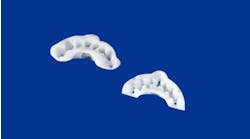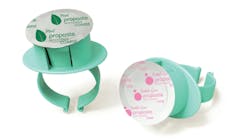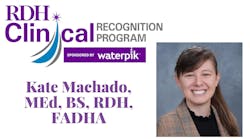The links to systemic health help validate the teachings of dental hygienists.
by Sandy Sheffler, RDH
The role of the dental hygienist has evolved and changed significantly over the years. After 34 years of practice I truly believe a dental hygienist can be a very important influence regarding a patient’s general health. For many years I felt that I was personally attempting to make a difference one patient at a time. When I began, dental hygiene was still young and many patients were unaware as to what a dental hygienist did. Hence, the image of the girl who cleans teeth began; that was how the dentist and staff viewed my role, and essentially how I viewed myself as well.
The therapeutic aspect of a hygienist’s work had not yet developed. In those days, I felt more like a physiological therapist than a periodontal therapist. Patients felt comfortable sharing their problems about spouse, children, parents, work etc., and it was interesting what people confided in me. I became not just the girl who cleaned teeth, but also the friend who cleans teeth.
Now things are really changing: the dental hygienist has become more involved in the general health of the patient. Acceptance of and respect for dental hygienists has increased greatly. The educated patients/consumers learn how their dental health can effect them medically, so a hygienist must be educated and informed, too. With this knowledge comes a heavy responsibility that is both challenging and rewarding.
For some time now we have been learning about the correlation between periodontal diseases and other systemic diseases. There are now many references linking various diseases, such as diabetes, heart attack, stroke, and possibly others that have not yet been fully studied. Inflammation and infection that figure into periodontal disease also contribute to these other diseases. A healthy mouth can lead to an individual’s optimal health.
Diabetes
Many times I have felt that my influence directly benefits the general health of my patients. Over a year ago, a male patient started seeing me, letting me know that he was a Type II diabetic taking four medications. He was having trouble with his weight, and consequently had difficulty regulating his blood sugar. I talked to him about the significance of diabetes relating to periodontal disease, and we eliminated his risk when his microscopic assay was negative of harmful bacteria. As we talked, I asked him if he had ever heard of the Zone diet. I knew the Zone diet was helpful for diabetics. Several weeks later, his wife was in my chair and asked if I was the one who had suggested this diet plan to her husband. She then informed me that her husband had lost 20 pounds and no longer needed to take many of the medications prescribed by his physician. This conversation happened over six months ago. The patient recently returned for re-care. He was still following the diet plan and had eliminated three of his four diabetic medications. My counseling resulted in a positive life-altering change.
Diabetes is a very complex disease.1 More and more Americans are being diagnosed with Type II diabetes. We as dental hygienists are learning more than ever the effects of diabetes on oral conditions but we need to know more. The term A1C level is fairly new. This is a hemoglobin factor and its levels are more influential now on the stability of the diabetes than blood sugar readings. The target percentage is 6 percent. Less than this amount could indicate hypoglycemia, while 8 percent A1C indicates out-of-control diabetes.2
Managing dental disease in a diabetic patient is multifaceted. There is a two-way relationship between diabetes mellitus and periodontal disease (infection). This proposed dual pathway of tissue destruction suggests that long-term control of diabetes requires control of chronic periodontal infection.3 Inflammation and infection in the mouth complicates the management of diabetes. Conversely, uncontrolled diabetes could cause extreme changes in the patient’s oral condition. The dental hygienist must know how to detect and treat the organisms causing infection.
Heart Disease
As with diabetes, periodontal disease is considered a risk factor for heart disease. The correlation between heart disease and periodontal disease has been discussed for many years now. Many current studies seek to explain this relationship. The February 2007 Special Supplement to Grand Rounds in Oral-Systemic Medicine provided extensive information about how this relationship forms. Evidence suggests that periodontal disease may be a modifiable risk factor for morbidity and mortality in a number of systemic diseases and conditions, including cardiovascular (CVD).4, 5 Cumulative inflammatory burden may play a part in the relationship between periodontal disease and atheroma formation (a fatty deposit in the inner lining of an artery resulting in atherosclerosis, also called arterial plaque). The total periodontal bacterial burden appears to be more significant in increasing risk for CVD than most single bacterial exposures,6 although a recent investigation demonstrated that specific bacterial profiles may be concomitant (they exist concurrently) risk factors in the development of acute coronary syndromes.7 These are just a few references from studies linking periodontal disease to heart disease. There were 73 references of studies in this particular publication alone.
Lots of technical information is not so easily deciphered. It is important to understand the intent, and how vital our role is in seeing that oral health is obtained. Much information overlaps since heart disease, diabetes, and smoking are intertwined. It is important that dental hygienists display a serious and committed attitude when working with patients since our role has changed so drastically.
Smoking
A hygienist will find other areas that tie into all other health issues. We are now actively involved with helping patients make decisions about smoking cessation. The ADHA has been promoting literature produced by Phillip Morris USA called Quit Assist.
In the past I felt that the hygienist should not get involved with a patient’s decision to smoke, but in the years I have been using a microscope to determine anaerobic bacteria, I have let my patients know that these bacteria thrive in a smoker’s mouth because smoking eliminates oxygen from the mouth and these organisms live without oxygen. I discuss the effects of smoking with my smoking patients on a daily basis, informing them that smoking inhibits the healing process and that periodontal patients who smoke will encounter difficulty controlling their periodontal disease.
The dental practice where I work is owned by a prosthodontist and many implant surgeries are performed here. Patients interested in implants are counseled about the aversive effects smoking has on the success of their surgery. Now that heart disease, diabetes, smoking, and periodontal disease all add up to very high risk factors with a potential terminal outcome, I have grown much more aggressive in my approach to their smoking.
Dental Caries
Though dental caries differs from periodontal disease, this condition merits discussion. Dental caries is a disease that I thought would have been cured in this day and age. When the water systems were fluoridated over 50 years ago and fluoride toothpastes were widespread, I thought that tooth decay would be eradicated, but this has not happened. While fluorides have helped to an extent, dental caries remains as much of a problem now as it was 34 years ago when I graduated from dental hygiene school.
Recently, dental caries became known as a communicable disease.8 The bacteria associated with caries spreads from person to person, much like periodontal disease. This contagiousness combined with poor eating habits has caused an increase in tooth decay. I see rampant tooth decay in too many patients.
The protocol I have established to counsel and educate patients is geared to their total health. Along with dental homecare instructions, I have patients appointed for a half hour of nutritional counseling (I charge $50 for this session and have never received any complaints). During their initial assessment a microscopic assay and saliva pH test are performed. When they return for the counseling session I review their medical history for GERD, Sjögrens, diabetes, smoking, etc. Since dry mouth contributes to dental disease, these must be considered in an evaluation. I take notes on eating and snacking habits. I never accuse or disparage, I just want to help people figure out how to modify their habits so they can control their disease. I also follow the advice of Shirley Gutkowski, RDH, and have them rinse twice a day with .12 percent Chlorhexidine (CHX) for a week and again every three months. I also instruct them to chew gum with Xylitol twice a day for five minutes. Sometimes I ask a whole family to follow this regimen. This protocol coupled with proper nutrition can break the cycle of continuous decay.
The highest risk groups are new college graduates without dental insurance and people over the age of 60. During college years, young people away from home often neglect health and nutrition. In contrast, as people age they have less saliva flow and more risk for diabetes and heart disease. If they are ignorant about proper nutrition they can find themselves in trouble with dental and physical health. When I counsel these people I not only help to eliminate decay caries, I help patients with their total health.
Pregnancy
Much is still unknown about the effects of periodontal disease as correlated with adverse pregnancies. That said, it makes sense that dentally healthier parents are less likely to pass disease on to their children. I work with pregnant women and expectant fathers and impress upon them the importance of good dental health.
The Future
The future is very bright for hygienists and dentists who see their role as health providers and educators. As I’ve said in previous articles, time is a major factor for success as a health educator. Learning takes time. Allot enough time during each visit to develop a relationship. As this relationship grows, a patient begins to trust and confide in you, allowing you to help a patient make correct health choices. I see our profession as a vital part in a person’s life and in many cases the hygienist might be saving a life. It’s not just about teeth anymore! I couldn’t be happier at anything other than dental hygiene.
Dedication
This article is dedicated to Dr. Paul Keyes, whose work led the way to the advancements of anti-infective therapy (non-surgical periodontal therapy). He greatly deserves recognition for his contribution to dentistry. He has my total appreciation. I would not be the kind of hygienist I am today without his teachings and dedication to the field. Thank you, Dr. Paul.
About the Author
Sandy Sheffler, RDH, has worked happily in private practice offices for 34 years. Her passions are helping people achieve total health through the aid of a microscope. She lives in Baltimore, MD, and has a husband, grown son and two grown stepsons. Empty nesting is very nice! Contact Sandy at [email protected].
References
- CDC (Centers for Disease Control and Prevention) 2005
- Course on CD by Dr. Brian Mealey: Potential Problems in Managing the Diabetic Patient. 2006v Grossi SG, Genco RT. J. Periodontal, 2006 Periodontal Disease and Diabetes Millitus: A Two-way Relationship 1998 July: 3(1): 51-61
- Genco R, Offenbacher S, Beck J. Periodontal disease and cardiovascular disease: epidemiology and possible mechanisms. J AmDent Assoc. 2002;133:14S-22S and Desvarieux M, Demmer RT, Rundek T. Periodontal microbiota and carotid intima-media thickness: the oral infection and vascular disease epidemiology study (INVEST). Circulation, 2005; 111:576-582.
- SpahrA, Klein E. Khuseyinova n,et al. Periodontal infections and coronary artery disease. Role of periodontal bacteria and importance of total pathogen burden in the Coronary Event and Periodontal Disease (CORODONT) study. Arch InternMed.2006;166:554-559.
- Renvert S, Petterson T, Ohlsson O, et al. Bacterial profile and burden of periodontal infection in subjects with diagnosis of acute coronary syndrome, J Periodontal. 2006 77(7): 1110-1119.
- J. Periodontal 2003; 74:1355-1360








